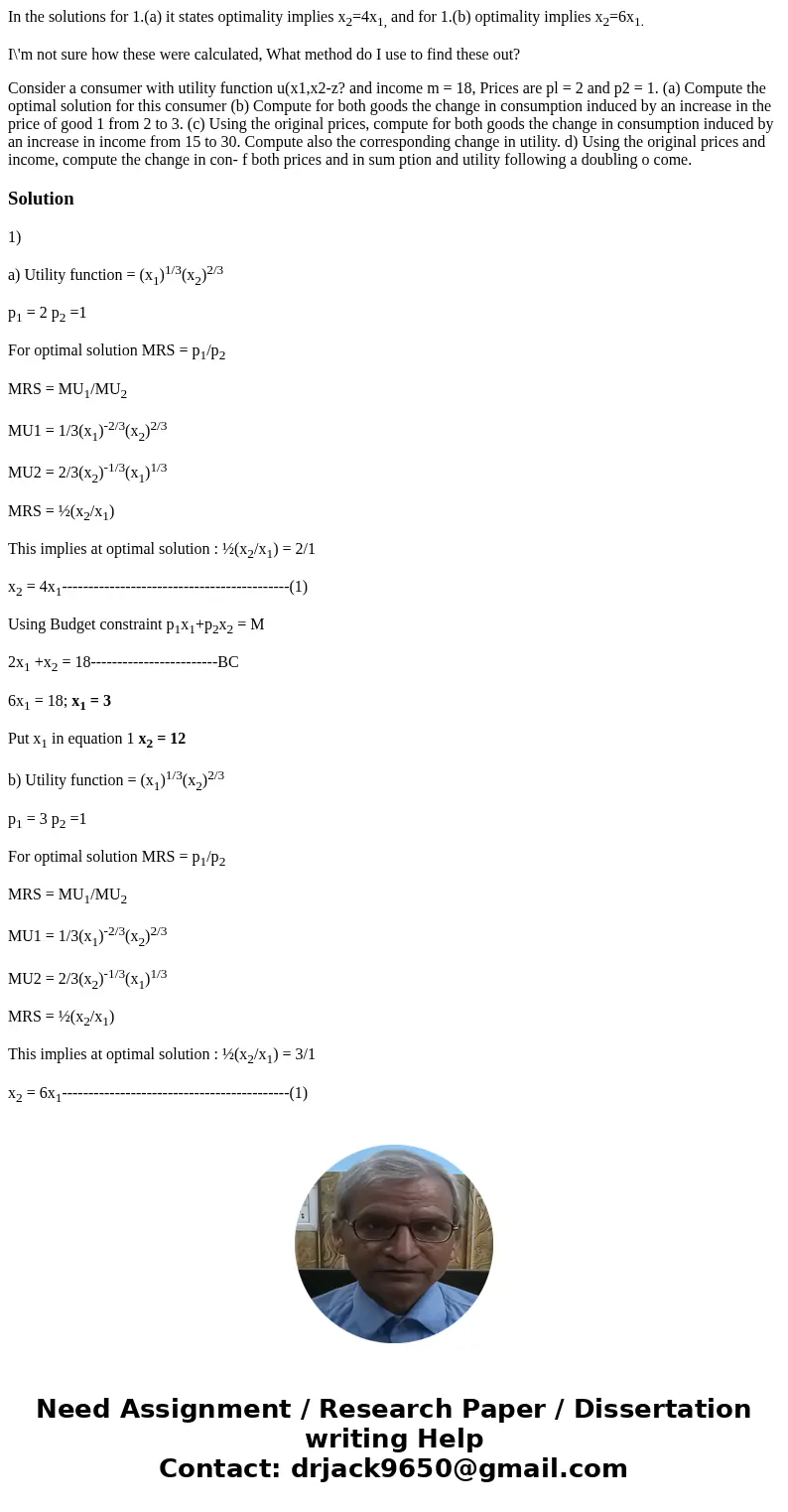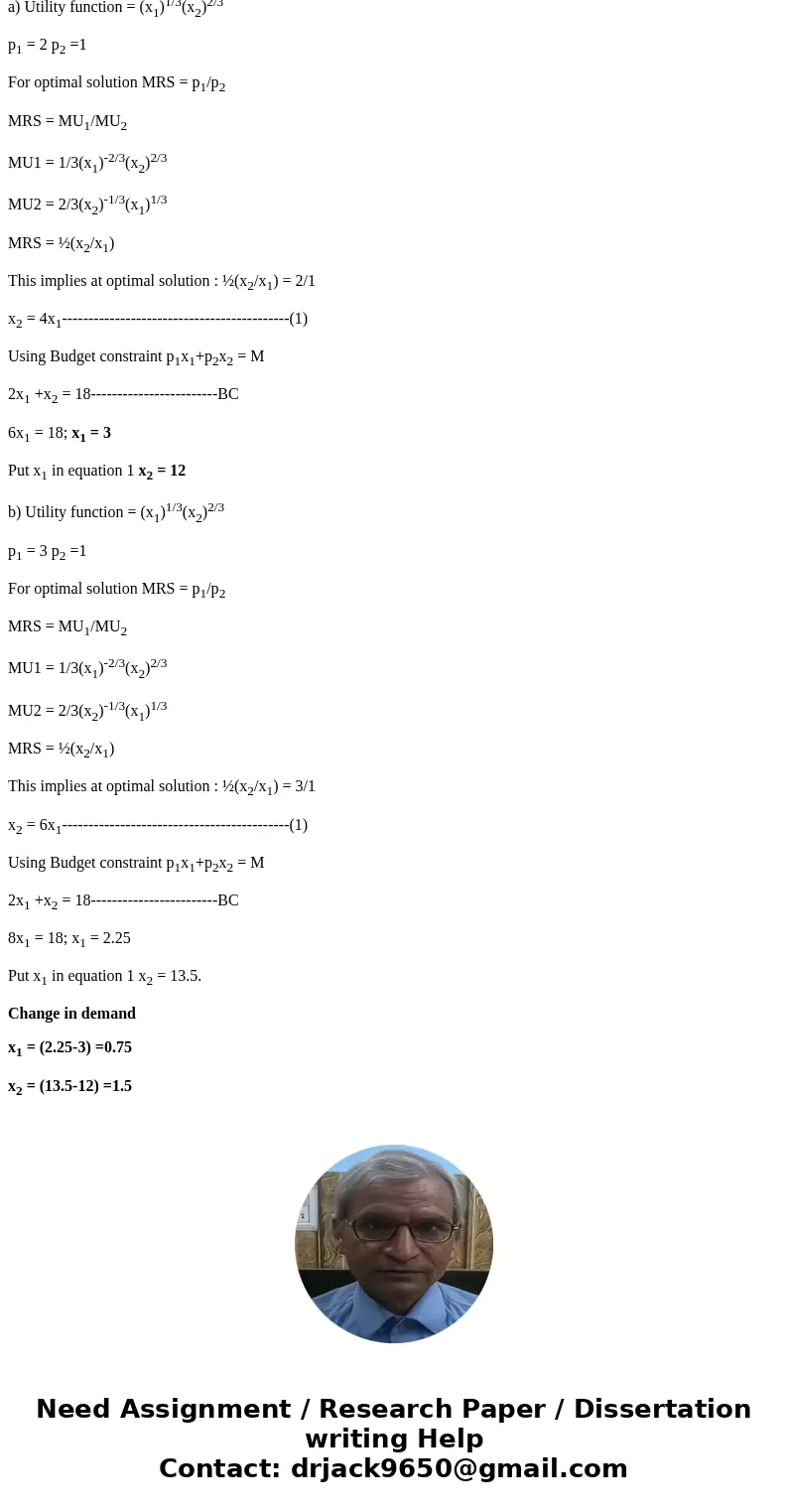In the solutions for 1a it states optimality implies x24x1 a
In the solutions for 1.(a) it states optimality implies x2=4x1, and for 1.(b) optimality implies x2=6x1.
I\'m not sure how these were calculated, What method do I use to find these out?
Consider a consumer with utility function u(x1,x2-z? and income m = 18, Prices are pl = 2 and p2 = 1. (a) Compute the optimal solution for this consumer (b) Compute for both goods the change in consumption induced by an increase in the price of good 1 from 2 to 3. (c) Using the original prices, compute for both goods the change in consumption induced by an increase in income from 15 to 30. Compute also the corresponding change in utility. d) Using the original prices and income, compute the change in con- f both prices and in sum ption and utility following a doubling o come.Solution
1)
a) Utility function = (x1)1/3(x2)2/3
p1 = 2 p2 =1
For optimal solution MRS = p1/p2
MRS = MU1/MU2
MU1 = 1/3(x1)-2/3(x2)2/3
MU2 = 2/3(x2)-1/3(x1)1/3
MRS = ½(x2/x1)
This implies at optimal solution : ½(x2/x1) = 2/1
x2 = 4x1-------------------------------------------(1)
Using Budget constraint p1x1+p2x2 = M
2x1 +x2 = 18------------------------BC
6x1 = 18; x1 = 3
Put x1 in equation 1 x2 = 12
b) Utility function = (x1)1/3(x2)2/3
p1 = 3 p2 =1
For optimal solution MRS = p1/p2
MRS = MU1/MU2
MU1 = 1/3(x1)-2/3(x2)2/3
MU2 = 2/3(x2)-1/3(x1)1/3
MRS = ½(x2/x1)
This implies at optimal solution : ½(x2/x1) = 3/1
x2 = 6x1-------------------------------------------(1)
Using Budget constraint p1x1+p2x2 = M
2x1 +x2 = 18------------------------BC
8x1 = 18; x1 = 2.25
Put x1 in equation 1 x2 = 13.5.
Change in demand
x1 = (2.25-3) =0.75
x2 = (13.5-12) =1.5


 Homework Sourse
Homework Sourse